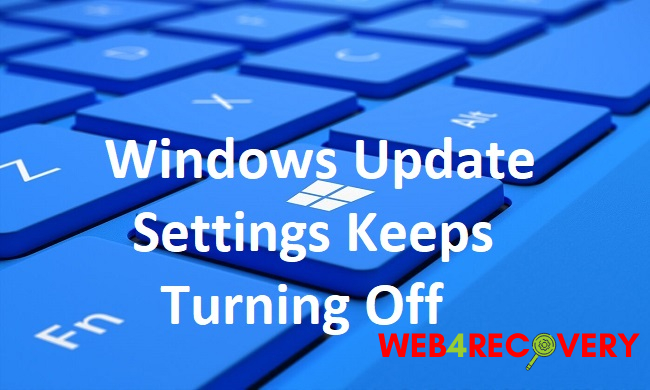Windows Update is a free service from Microsoft that provides updates for the Windows operating system and other Microsoft software.
While these updates often provide important security patches and software improvements, some users may encounter situations where Windows Update settings keep turning off or disabling themselves automatically.
This guide will provide comprehensive solutions to these issues and show you how to permanently disable Windows Update, if needed.

1. Why Windows Update Settings Keep Turning Off
Automatic updates are typically designed to keep your system secure and up-to-date with the latest patches. However, it can be frustrating if the Windows Update settings keep disabling themselves.
This issue can occur due to various reasons such as conflicting software, corrupted system files, or incorrect configurations.
2. How to Resolve the Issue of Windows Update Settings Turning Off
Below are steps you can follow to troubleshoot and fix the problem.
Method 1: Run Windows Update Troubleshooter
Windows comes with a built-in troubleshooter that can identify and fix issues with Windows Update. Here’s how to use it:
- Go to ‘Settings’ > ‘Update & Security’ > ‘Troubleshoot.’
- Click on ‘Additional troubleshooters.’
- Select ‘Windows Update’ and then ‘Run the troubleshooter.’
Method 2: Check for Conflicting Software
Certain security software or applications can cause conflict with Windows Update. Try temporarily disabling these programs to see if they are causing the issue.
Method 3: Perform a System File Check
Corrupted system files can cause Windows Update to malfunction. The System File Checker (SFC) tool can fix this issue:
- Open ‘Command Prompt’ as an administrator.
- Type ‘sfc /scannow’ and press ‘Enter.’
- Wait for the scan to complete and fix any issues.
3. How to Permanently Disable Windows Update
If you need to permanently disable Windows Update, follow these steps:
- Press ‘Windows + R’ to open the Run dialog box.
- Type ‘services.msc’ and hit ‘Enter.’
- Scroll down and double-click on ‘Windows Update.’
- In the ‘Startup type’ dropdown, select ‘Disabled,’ then click ‘Stop,’ followed by ‘OK.’
Please note that disabling Windows Update will prevent your system from receiving critical security updates, which could make your system vulnerable to threats.
4. Windows Update Settings and Startup
Some users have reported that their Windows Update settings revert to their original state on startup.
If you are experiencing this issue, consider creating a task in the Task Scheduler to disable Windows Update each time your system starts:
- Press ‘Windows + R,’ type ‘taskschd.msc’ and hit ‘Enter.’
- Click on ‘Create Basic Task.’
- Name the task, add a description if needed, and click ‘Next.’
- Select ‘When the computer starts’ and click ‘Next.’
- Choose ‘Start a program’ and click ‘Next.’
- In the ‘Program/script’ box, type ‘net stop wuauserv’ and click ‘Next.’
- Review the settings, tick ‘Open the Properties dialog for this task when I click Finish,’ and click ‘Finish.’
- In the properties dialog, check ‘Run with highest privileges,’ then click ‘OK.’
In conclusion
While it is crucial to keep your Windows operating system up-to-date with the latest security patches and updates, some situations might warrant disabling Windows Update.
Always remember that disabling updates could expose your computer to risks and should be done with caution.

















